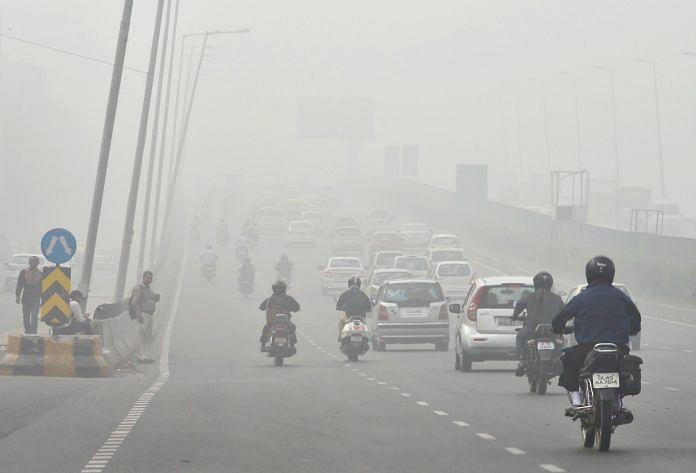The paddy being grown in Punjab is alien to conditions in Punjab, and the burning of its stubble has had a big impact on the state’s air quality.
Punjab is an agrarian state with predominant wheat-paddy cropping cycle. During the kharif season every year, paddy is grown in standing water on about 2.9 million hectares of land.
This paddy crop, taken up by Punjab farmers in the early 1980s, is alien to the agro-climatic conditions of Punjab. Its superior cultivar, basmati, grown in the sub-mountainous areas of the state as well as the Bari Doab tract is a native crop.
Paddy cultivation gave better economic returns to farmers, and improved the health of the soil to some extent. But it is plagued by the twin problems of excessive use of water for irrigation in the peak summer months, leading to the lowering of the groundwater table, as also the problem of burning its straw after harvesting, resulting in colossal air pollution during the winter months.
About 20 million tons of paddy straw is produced in Punjab, of which about 15 million tons is managed by way of field burning by the farmers. This is because the window for the sowing of next wheat crop is too small to allow for the lengthy environment-friendly method of incorporating straw into the soil. Only about one million tons of straw is used in seven biomass-based power plants, and about three million tons, mainly basmati straw, is used as animal fodder.
Environmental scientists have proved that for every acre of land where paddy straw is burnt, about three tons of carbon dioxide, 120 kilograms of carbon monoxide, six kilograms of particulate matter, four kilograms of sulphur dioxide, and 400 kilograms of ash are released. This means in early winter, Punjab itself comes under the grip of the greenhouse effect.
It is also a fact that the burning of paddy straw also results in burning of precious organic material in the paddy field. For every acre of land, there is a loss of 5.5 kg of nitrogen, 2.3 kg phosphates, 25 kg potassium, about two tons of manure. In addition, useful microbes are also burnt.
What the government has done
The Department of Environment, Government of Punjab, has already banned the burning of crop residue in the fields through an order passed in 2013, under the Air Act, 1981.
Then, in 2015, the National Green Tribunal issued an order prohibiting the burning of paddy straw, and in addition, asked the government to make necessary technology available to farmers for managing paddy straw.
The state government estimated that the total value of the machinery required for in-situ paddy straw management is about Rs 7,000 crore and requested the Centre to provide a bonus of Rs 100 per quintal on the minimum support price of paddy, in order to financially empower the farmers to take extra steps to incorporate the straw in the soil. However, Punjab’s request has not found favour with the Government of India.
Massive farmer awareness campaigns by the Punjab government, as well as introducing various technological measures including ordering the setting up of a straw management system on combine harvesters by offering 50 per cent subsidy, have had a positive impact on the situation.
Various administrative measures – like ordering government employees and other stakeholders who own farmlands not to burn paddy straw – has had a positive impact. The number of stubble fire incidents, as measured through remote sensing satellites, has reduced by 30 percent.
Many a time, stubble burning in Punjab is blamed for pollution in Delhi. However, during October and early November this year, when Delhi started reeling under severe air pollution, the wind direction has remained easterly. Therefore, there cannot be any impact of the polluted Punjab air on Delhi. However, various environmental factors, including stubble burning, have contributed to a deteriorating air quality in Punjab.
The author is an IAS officer, and is presently the chairman of the Punjab Pollution Control Board




Most plants we call herb plants are indeed herbaceous.
When will we leave this attitude of blaming neighbour states and ignoring the wellbeing answer status of the nation as a whole
I would like to ask him what about the loss of biomass in expansion of roads with trees being cut from chandigarh to bathinda and almost nil replacement by construction agencies in the measure of biomass, failure of government machinery to provide alternative source of income and to check stubble burning and seeking a hide out under the word alien paddy
Outstanding efforts for the air pollution. All NRI , who have roots in India are very proud of Mr. Pannu’s vision and innovation.
Manju kumar
New Jersey
USA